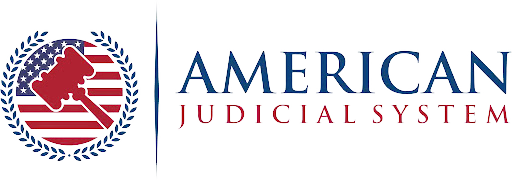Going through a custody battle? Navigating family court systems seems complex to many parents. You’re not alone.
Parents often find child custody laws difficult to navigate because they consist of legal terminology and require multiple court appearances while also causing emotional stress. The fundamental knowledge of custody laws can significantly impact your legal strategy and expected case results.
This guide will explain all essential information about child custody laws beginning with different custody arrangements and ending with judicial criteria for decision-making.
What You’ll Discover Inside:
- Types of Child Custody Arrangements
- How Courts Determine Custody
- Understanding Parenting Plans
- Child Support and Custody Connection
- Modifying Existing Custody Orders
Types of Child Custody Arrangements
Child custody solutions must be tailored to meet the unique needs of each family. Because every family situation presents unique challenges and needs the courts have developed multiple custody arrangement options.
Legal Custody vs. Physical Custody
Let’s start by learning how legal custody differs from physical custody.
- Legal custody allows a parent to decide vital aspects of their child’s upbringing such as education choices, medical care, and religious practice.
- Physical custody establishes which parent will have the child live with them and who will manage daily caregiving responsibilities.
Joint Custody vs. Sole Custody
The following distinction separates joint custody from sole custody.
- Joint custody involves both parents sharing legal custody, physical custody or a combination of both forms. Recent statistics show that 40% of US states are working toward establishing equal custody time for both parents.
- Sole custody designates that one parent holds both legal and/or physical rights over the child.
The fact that 90% of custody cases settle outside of court trials highlights how crucial negotiation abilities are within family law. Most parents work out family arrangements independently so that judges do not make the final decisions.
How Courts Determine Custody
When your custody case proceeds to court, it becomes essential to understand how judges decide on custody matters. While specifics vary by state, all custody determinations are guided by one fundamental principle: the best interests of the child.
The Best Interests Standard
This custody standard evaluates multiple elements to establish which arrangement will best promote a child’s contentment and emotional well-being.
Some key factors courts consider include:
- The child’s age, health, and specific needs
- Each parent’s ability to meet those needs
- The strength of each parent’s emotional connection with the child
- Each parent’s home environment and stability
As the experts at Smith Law Office point out, “Courts today recognize that in most cases, children benefit from having meaningful relationships with both parents, even after a divorce or separation.” Family legal services concentrate on helping parents establish plans that enable both to stay active in their children’s lives.
Factors That Can Negatively Impact Custody
Judges assess factors which demonstrate that a parent might be an unsuitable candidate for custody such as:
- History of domestic violence or abuse
- Substance abuse issues
- Inability to provide a stable home environment
- Unwillingness to cooperate with the other parent
Understanding Parenting Plans
The parenting plan serves as a comprehensive document which details the joint child-rearing arrangements parents have agreed upon following their separation or divorce. An effective parenting plan addresses more than just the distribution of custody days between parents.
What to Include in Your Parenting Plan
A comprehensive parenting plan typically includes:
- The time-sharing schedule specifies which parent will have the child during regular periods and special events like holidays and school vacations.
- The section about decision-making responsibilities explains how parents will jointly handle choices relating to their children’s education and healthcare as well as important matters.
- The parenting plan must outline the methods parents will use for communicating about their child and the specific times these communications will occur.
- The process through which parents will address disagreements regarding their parenting plan.
The most effective parenting plans maintain essential structure yet incorporate flexibility. As children mature their needs evolve and unforeseen circumstances develop. Successful planning includes adaptable mechanisms to handle changes without necessitating court intervention.
Child Support and Custody Connection
Child custody operates as a distinct legal matter separate from child support yet both issues remain closely interconnected. Child support obligations remain in effect regardless of how custody arrangements are set up.
How Custody Affects Support
The calculation of child support orders usually relies on several factors.
- Each parent’s income
- The number of nights the child spends with each parent serves as a key factor in determining the custody arrangement.
- The child’s needs and expenses
Child support agreements covered nearly fifty percent of custodial parents during recent years. The actual payment of child support often differs from the court-ordered amount. The average yearly child support payment amounts to approximately $3,431 but just 60% of spouses who were awarded support receive payment.
Support Beyond Court Orders
The United States has about 12.9 million custodial parents who are responsible for millions of children who are 21 years old or younger. Many of these parents face financial challenges. The United States had 7.3 million single mothers and 1.6 million single fathers as of 2023.
The child support program collects billions in payments but less than one quarter of single-mother families benefit from child support. In this situation parents must make joint efforts whenever possible while people in need should seek out existing resources.
Modifying Existing Custody Orders
As family life evolves parental custody agreements may need to be updated. The majority of states permit custody order modifications after a “substantial change in circumstances” occurs.
What Constitutes a Substantial Change
Certain situations that could justify a custody order modification consist of:
- A parent’s relocation
- Changes in the child’s needs or circumstances
- When one parent fails to provide proper care for their child
- The ongoing failure of a parent to follow the existing order
The Modification Process
Modifying a custody order requires you to follow specific steps.
- Submit your modification petition to the original issuing court.
- Serve the petition on the other parent
- During the hearing you must demonstrate how the proposed modification serves the best interests of the child.
The parent who seeks to alter the custody arrangement must demonstrate to the court why the modifications are required because courts prioritize maintaining stability for children.
Navigating the Legal System
Parents often choose to work with legal professionals when handling custody issues. Retain legal counsel from a family law attorney when your case has complexities or your child’s safety is at risk or when your co-parent retains legal representation.
Legal support options encompass traditional representation, limited scope representation, mediation services and collaborative law methods. The various legal assistance options provide support that varies based on individual needs and financial capacity.
Additional resources for parents facing custody challenges extend beyond legal support to incorporate court-sponsored programs as well as support groups and mental health services.
The Bottom Line on Child Custody
Understanding child custody laws remains manageable with proper guidance. Gaining proper information and support allows you to handle the custody process with assurance while prioritizing your children’s wellbeing.
Remember these key points:
- Understand the different types of custody arrangements
- Show how your actions benefit your child’s best interests by maintaining a clear focus.
- Create a detailed, flexible parenting plan
- Know how custody and child support interact
- Stay ready to adjust your plans whenever life situations evolve.
While navigating custody proceedings presents numerous challenges you can successfully manage this process by always prioritizing your children’s needs. Your children’s development and contentment depend on your ability to access information and resources to establish beneficial arrangements.










